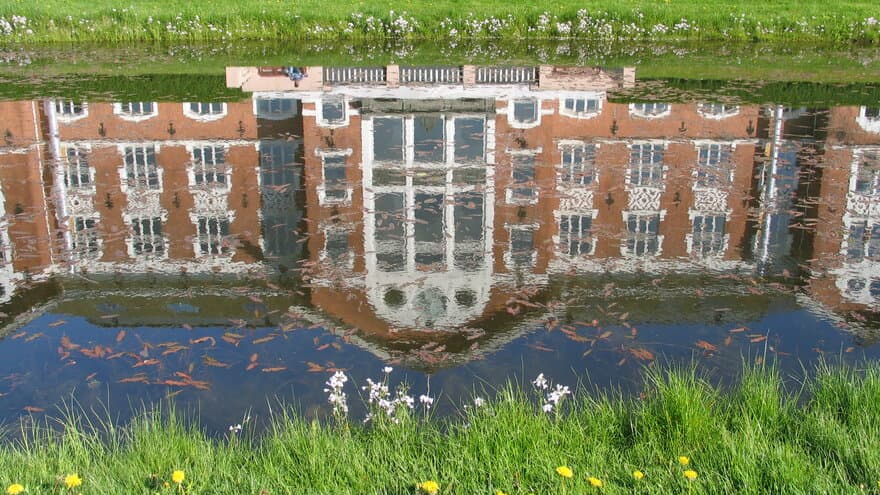Urbygningen is situated with its main facade facing Riksvegen (the National Road). It was completed in 1901 and served as the new educational building at that time. Urbygningen means the clock building, and it has a clock on its frontside.
Urbygningen is an east-west oriented block with three stories and a half-hipped roof. It features three symmetrical projections (risalits) on the south side and corresponding wings on the north side. The protrusions are clearly visible on the long facade. However, the short facades have a more subtle appearance. The shorter end wall resembles a transverse facade with a central risalit, somewhat similar to the end walls of the Circus building. This design choice was likely made to harmonize Urbygningen with the existing architectural ensemble.
Urbygningen underwent a complete renovation in 2015-2016.
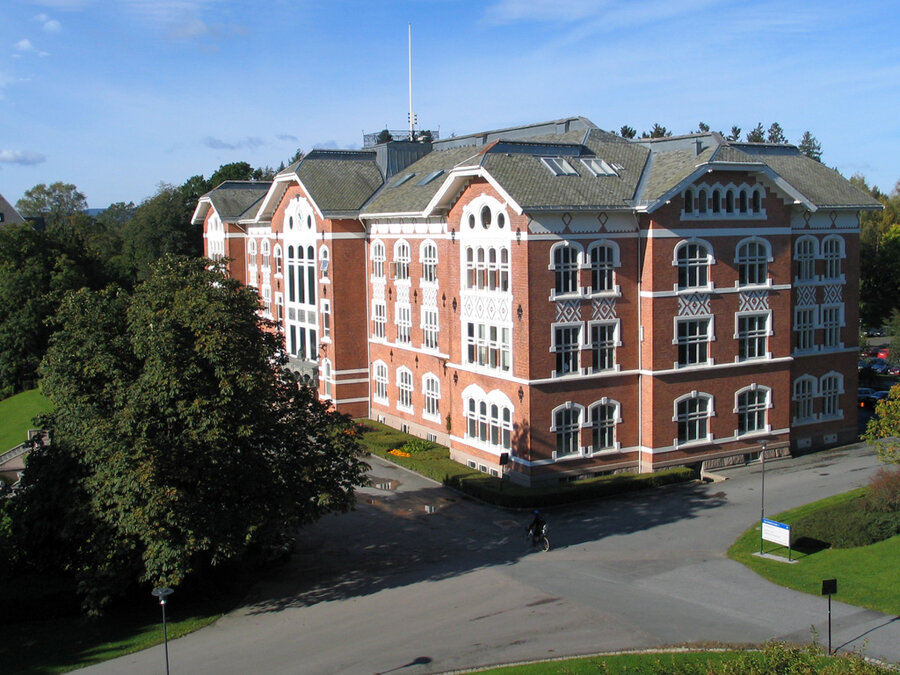
Choice of plot
Urbygningen was the first of the college buildings to be constructed as a new building during Ole Sverre’s time. The location of the building was therefore a subject of discussion. Practical considerations such as ground conditions and the need for satisfactory water pressure in pipelines had to be evaluated. Simultaneously, aesthetic reasons played a significant role in choosing the site, including integration with the existing architectural ensemble and the entrance facing Drøbak Chausseen (National Road 152).
Installations
The relatively new and unfamiliar requirements for electricity and water supply, central heating, ventilation, and fire safety were a special challenge for the project. It was first outlined that boilers and machines for electricity and central heating should be placed in a separate house. Due to increased costs of additional house building, it was decided that the machinery should be located in the basement under the central wing of the main building. However, a water closet was not installed. The outdoor toilet solution was continued and a privy building northeast of the main building was erected in 1902-1903. The building was made of brick and contained five toilet rooms and a urinal. The facade and roof had the same style as the other brick buildings. The house that housed the outdoor toilet later got the popular name “The Tower”, due to its appearance. The building was demolished in the 1960s. By then, water closets had long been in place in the larger buildings.
The building’s functions and machinery
“The building’s original functions can be seen from the room division of Urbygningen, 1900”.
Urbygningen has a base area of 1600 square meters and originally contained 63 rooms. It is 70 meters long, 32 meters wide at the central wing and 25 meters wide at the end wings. The building has three floors in addition to the basement and the plateau on the roof was used for teaching in geodesy, by sighting and control of instrument.
They were proud of the machinery and the technical installations. The college now had a “power station” that provided light to the entire institution, up to 800 “sixteen lights” incandescent lamps and power to operate agricultural machinery. It also had its own battery accumulator. The “power station” was driven by two water tube steam boilers, each with 80 square meters of heating surface and two steam engines of 50 horsepower.
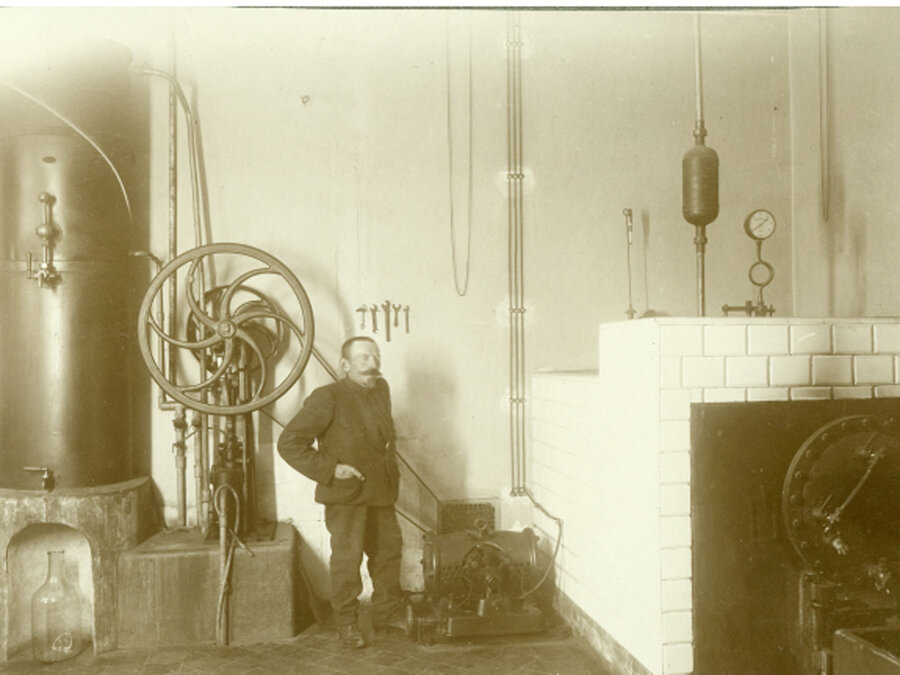
The waste steam was used to heat the main building. Ventilation ducts were laid around the entire building and into the rooms that needed large air exchange. Cold air was heated up in a heat chamber in the attic, then mixed with cold air to a suitable temperature and spread out in the building by means of an electric fan. In the rooms where there was no need for strong ventilation, only fresh air vents were used.
The water supply was a challenge as the steam boilers and laboratories could use up to 50 cubic meters per day. This much water was not available at all times. It was therefore arranged so that the condensation water from the heating pipe was collected, rinsed and reused. The same happened with all the water that was used in distillation apparatus in the laboratories, for vacuum pumps and other simular apparatus. The water access was increased by building a new water well in the southwestern edge of Kajaskogen. (Behind the building Kommandanten).
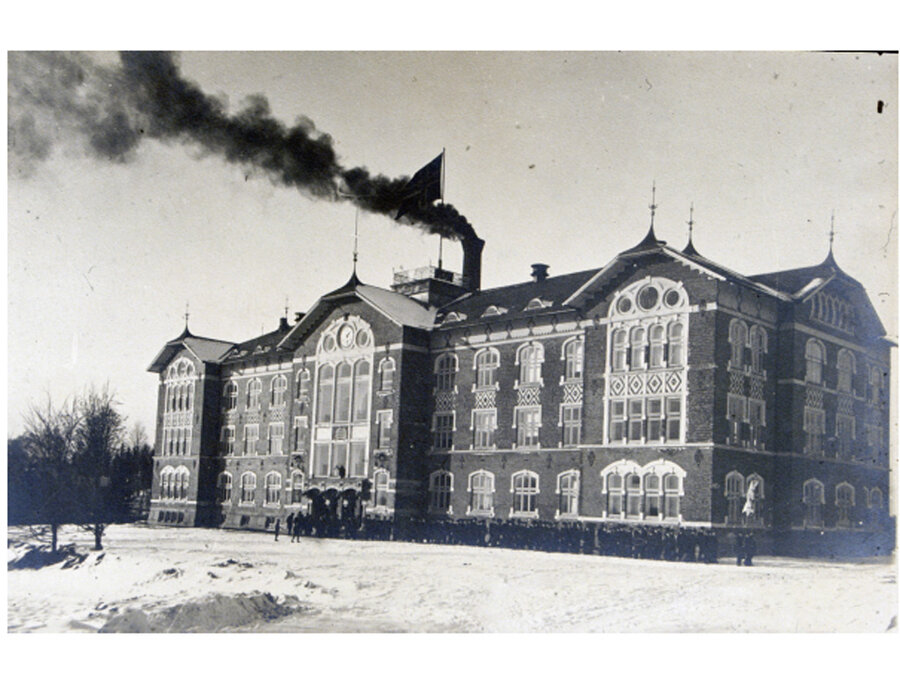
In case of a fire, fire hydrants were installed on the main supply pipe on all three floors. The original building with its technical facilities stood out as particularly modern when it was completed.
From 1907, negotiations began with Glommen Tresliperi to transfer more power from them, but it was not until 1915 that six Follo municipalities succeeded in transferring energy via Skiseng. In 1917, alternating current was introduced, and the plant in Urbygningen was shut down. The steam boilers were replaced by six low-pressure boilers that were responsible for heating the building.
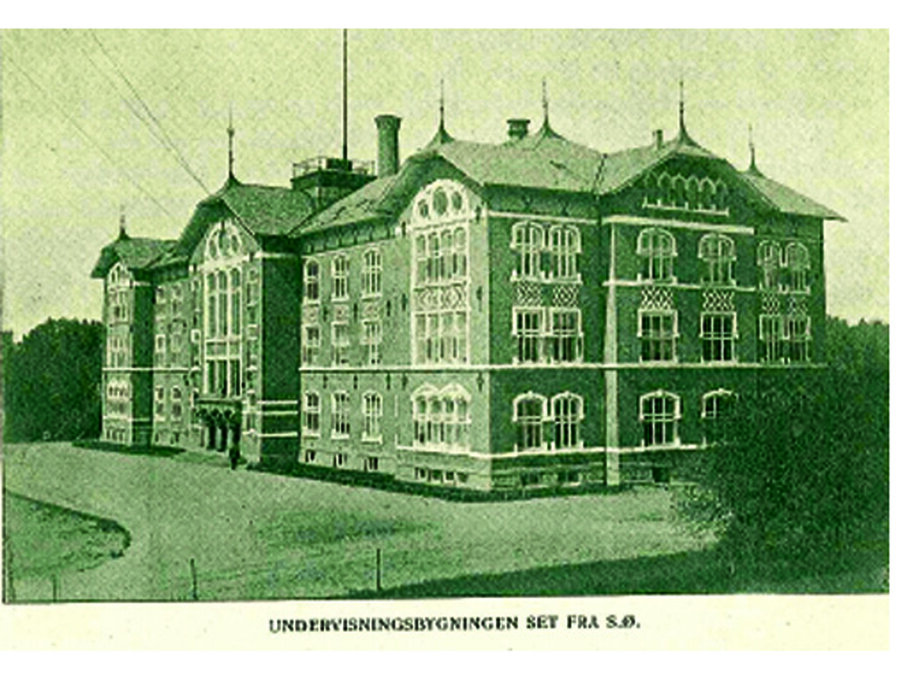
The Roof
The large number of wings and risalits of varying widths, in addition to the requirement for the same roof angle, leads to a very complicated roof surface. The conditions become extra complicated as the middle north wing (Festsalen wing) has a deviating height.
The roof solution is intricate, but gives the building a soft, sliding upper contour. This was emphasized around 1900 by the small, arched ark-built buildings and the curved spires on the gable top. In recent times, the spires have been removed and ventilation channels have been added. This takes away some of the soft roof shape.
Interior
The floor plan in Urbygningen is a continuation of Cirkus. The rooms are located towards a central corridor with main access via a staircase in a transverse central wing and with secondary accesses in the side wings. The construction systems are the same as in Cirkus, Tivoli and Økonomibygningen. This also applies to the materials used, with a couple of exceptions.
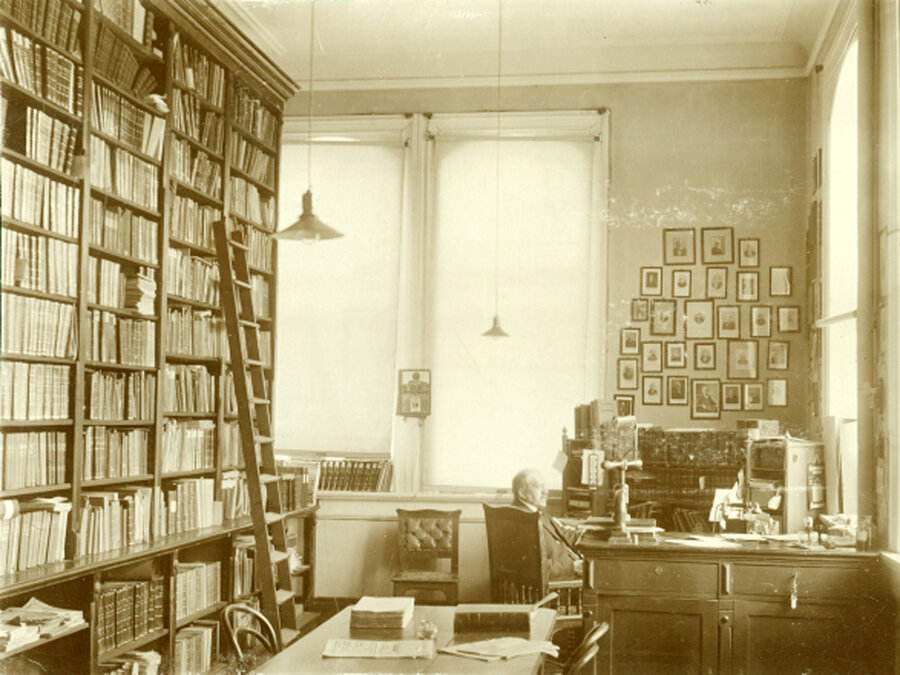
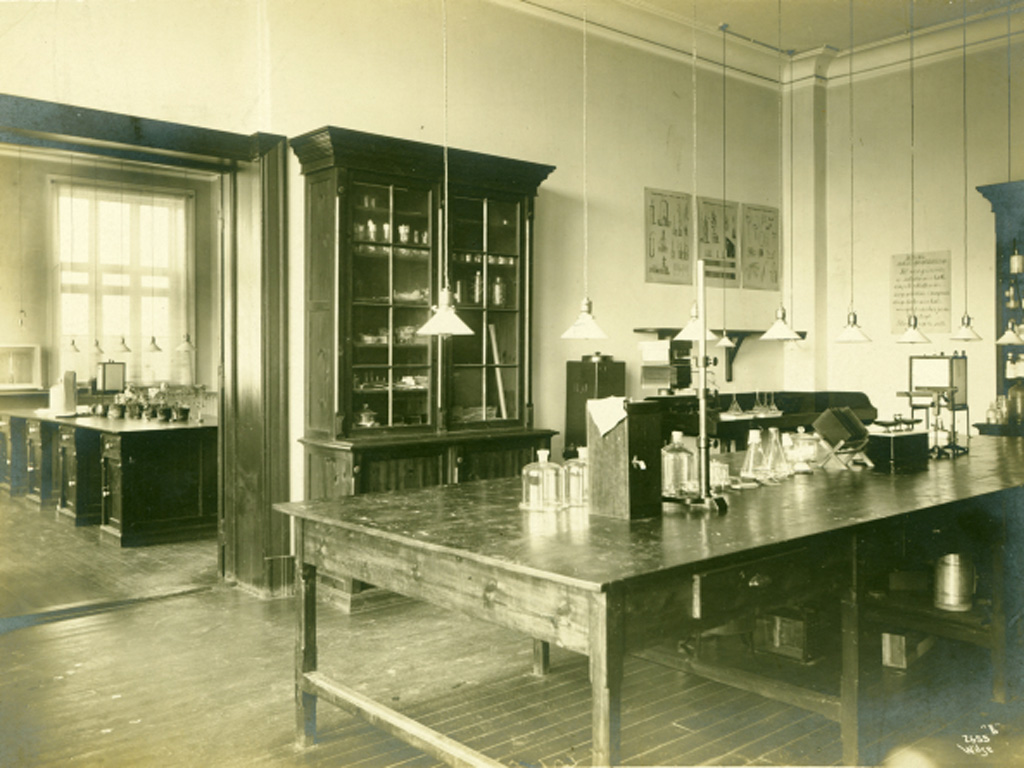
A Laboratory in Urbygningen. Photo: Archive
Facade detail
The brick in the facades is lighter, smoother, more even and of a clearly better quality than the earlier buildings.
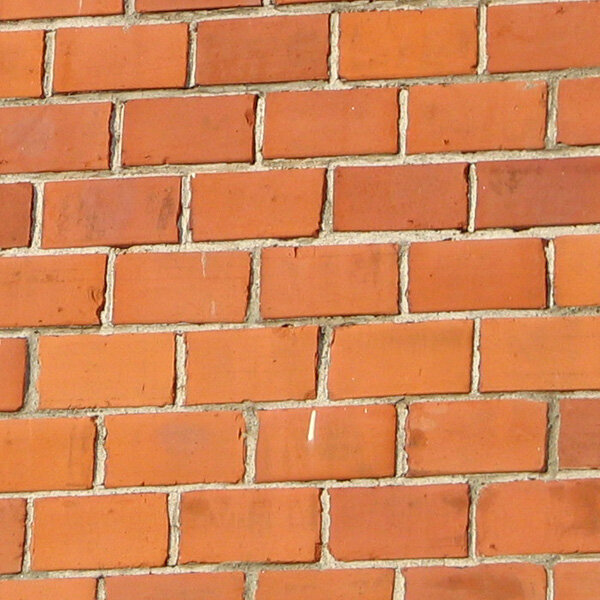
The bond is in copper. The base floor has concrete walls that are externally clad with finely cut red granite (nordmarkite). This relatively high base floor thus becomes a more prominent part of the facade than in the previous buildings. In the transition between the base and the masonry, there is no plaster band, but an edge profile in the material of the base..
The decorative details from Circus are repeated in the façade of Urbygningen, but they have been further developed and refined. Two horizontal plaster bands are consistent across all facades. One is in the form of a slightly projecting cornice at the height of the second floor. The other is a flat band separating the third floor from the attic. Additionally, in the south façade’s risalits, there is another band at the height of the first floor. These bands contribute to dividing the façade into smaller asymmetrical sections.
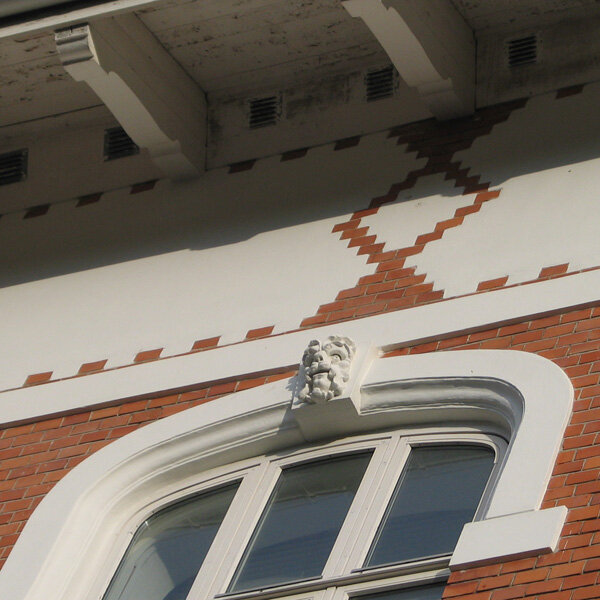
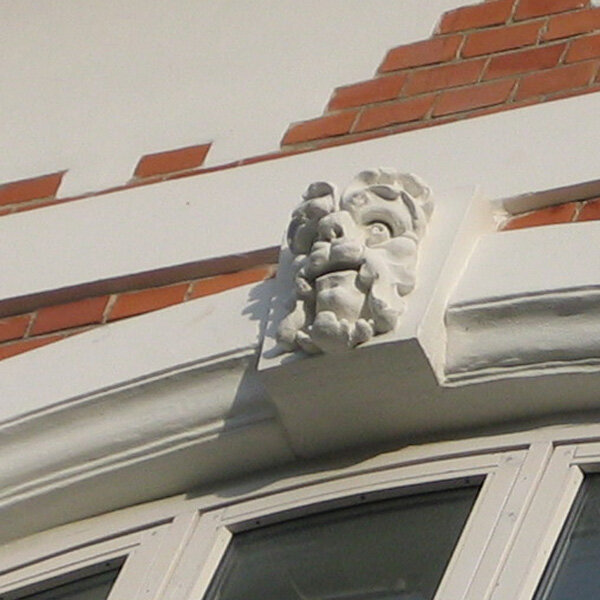
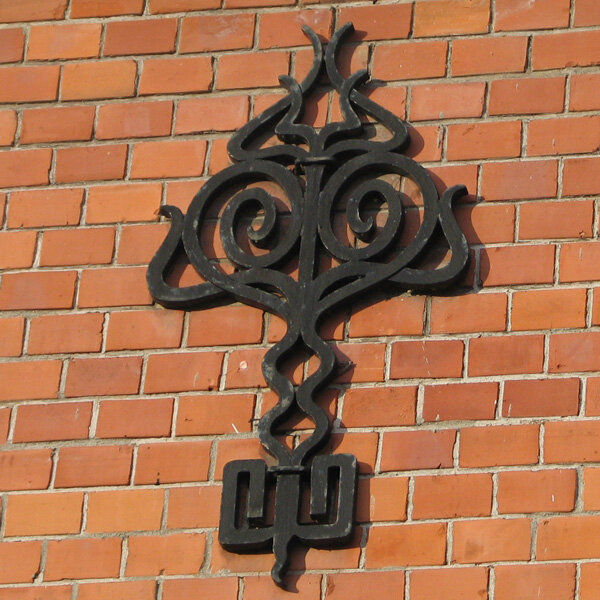
The loft walls beneath the rafters are designed as a broad, decorative frieze, where upright diamond-shaped forms in the mortar masonry correspond with the rafters above, as well as with the window axes and the spaces between the windows below. The window sills remain the same, and the windows themselves are of the same type and design as those in Circus, except for the ones on the south façade, which are wider and in line with the building’s greater floor height. The plastered frames are of the same basic type as in Circus, but their decorative effect is enhanced through the pronounced terminations of the window sills and the arches above. In the upper floor, the keystones at the top take the form of grotesque masks. There is variation in the placement and size of the windows in the other facades; shorter facades have narrower windows, and the “rear” facades feature simpler decoration. The central wing with the banquet hall has its own types of windows and its unique façade structure.

The southern facade is the entire college campus’s showcase facade. Here, the academic face of Norwegian agriculture is expressed in a meticulously crafted piece of architectural composition. The regular fields are built uniformly. Window axes and roof angles rhythmically alternate with decorative iron anchors at the floor divisions.
Entrance Portal
The entrance portal is divided into three parts, with column-bearing arches that correspond to the division of window fields above. The arch band is carved in soapstone (kleberstein) and is crowned by the national coat of arms in the same material. The heads of four domestic Norwegian animals bear the arches of the portal.

Prize-winning examples of the horse, cow, pig, and sheep lead the way to the main building of the foremost teaching and research institution for agriculture. The symbolic content is carried forward in the three decorative fields above. In the middle stands the institution’s name in bold relief script. To the left, timber cutting with a steam engine is depicted, and to the right, grain harvesting with a side-discharging mower pulled by two horses. The entrance has three double oak doors with upper glass fields framed by carved, robust frame pieces with Romanesque-associated details. In the breastwork field, “Anno 1900” and the national coat of arms are carved, flanked by four barley straws. The third window field culminates in the symbol of time and eternity, the clock, and in the keystone above, one sees Athena, the goddess of agriculture and all higher education.
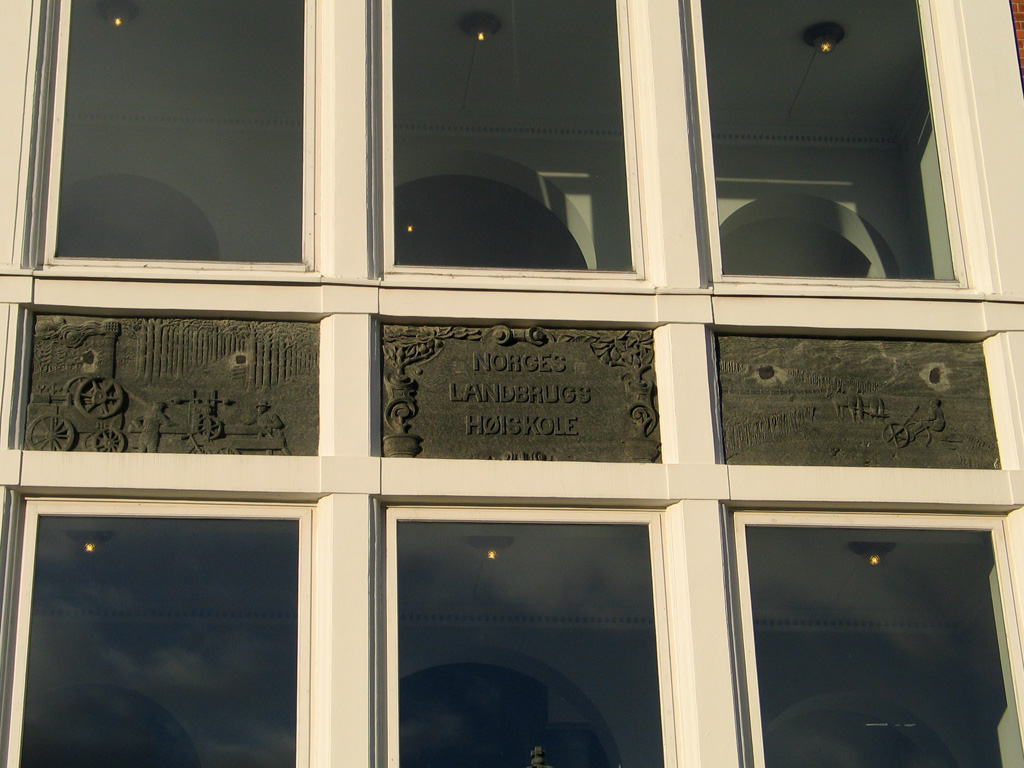
- The stairwell. Photo: Kjersti Sørlie Rimer.
The stairwell has the same width as the portal outside and extends from the basement to the attic. It elegantly curves upwards in arches and is carried by paired granite columns with profiled capitals of soapstone. Against the wall, there are pilasters accordingly.
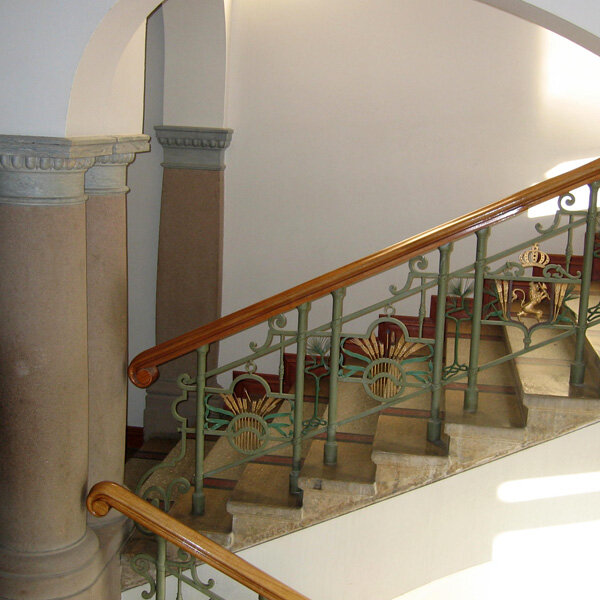
The floor and stairwell have a mosaic covering in a geometric pattern. Just inside the door, the national coat of arms with the side-by-side corn stalks is inlaid. This motif is repeated in the painted steel railing, where it alternates with other agrarian symbols.

The sober and dignified elegance that characterizes the stairwell is discreetly followed up in the corridors with pilasters, wainscoting, and floor covering of black and yellow-red tiles in a herringbone pattern.
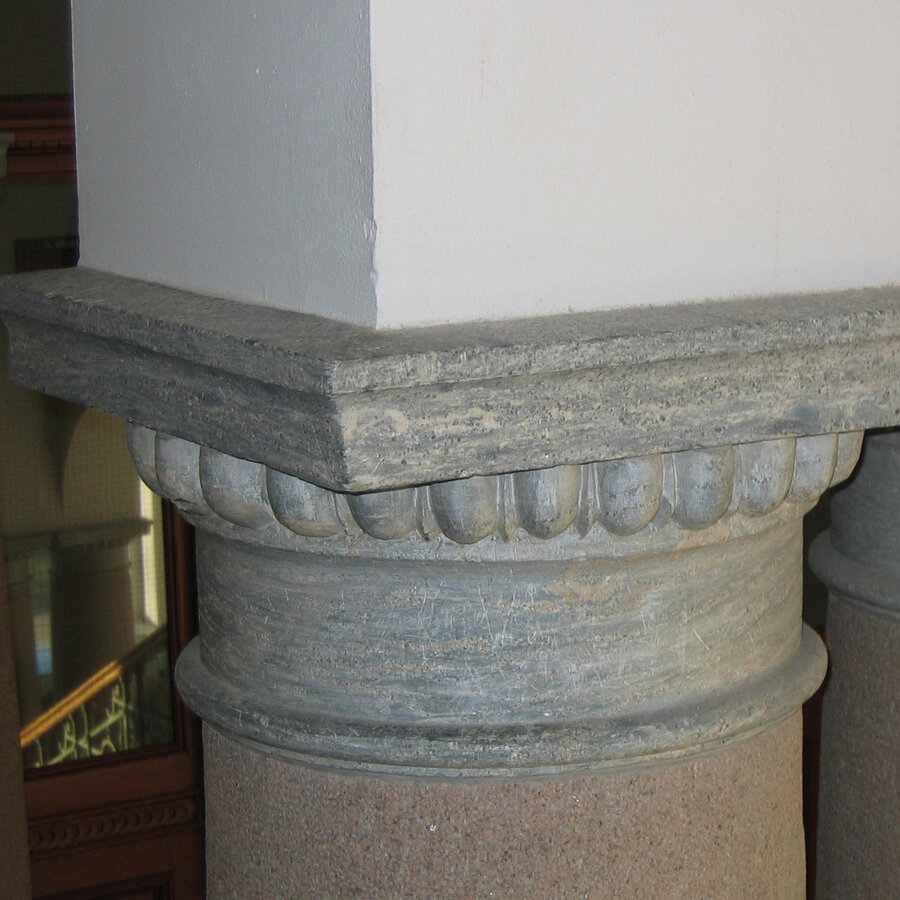
Style history
The Main Building came into existence at a stylistic historical divide. It took four years from the start of the building until it was completed (1896-1900). One could therefore have expected a tendency towards tightening in the Neo-Renaissance form language in a calcining direction, and a greater use of natural materials in façade detailing. The consideration for the existing building mass has probably weighed heavier than following this tendency.
Nevertheless, one finds example of the tendency pointing towards Art Nouveau being used on elements in the building. The base façade is an example, with strongly sloped surfaces in profiled, carved granite, it has a design that can be found again at the Historical Museum, a building that was completed the same year (architect Henrik Bull).
The roof surfaces with their slightly wavy contours and with their curved peaks and spires on the gables, are another example. The latter element is no longer as visible after various renovations. The entrance portal is also relatively unbound in relation to the ideals of the Neo-Renaissance. The landing height inside has dictated the height in the three-part arched field outside, giving it a height without a classical character. The same applies to the columns’ slightly heavy and bulging shape and animal heads.
Ole Sverre had a good collaboration with craftsmen and artists in this building. Stonecutter Christiansen was responsible for the design of the plinth wall, the columns, and the pilasters. Sculptor Georg Andreas Heggelund (1860-1916) was responsible for the portal shape, the animal heads, the reliefs in the field above, and the grotesque masks in the windows on the 3rd floor.
Information sourced from ”Bygninger ved Norges landbrukshøgskole drawn by Ole Sverre”, written by Erik Aas jr. i 1996 and NLHs anniversary books.
